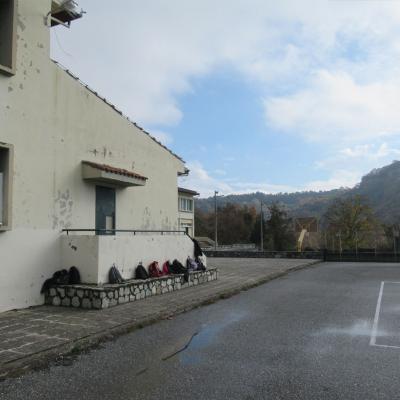OLYMPUS MOUNTAIN
OLYMPUS MOUNTAIN
Mount Olympus is famous throughout the world for its history, its cultural significance and its ecological treasures as well as its place in mythology. An entire Greek ecosystem is contained within its graded heights. It is the highest mountain in Greece, rising to 2,918 metres, with a lengthy Alpine belt above 2,500 m. and more than 10 peaks exceeding 2650 m. The highest peaks are Mytikas (2,918 m.) followed by Skolio (2911 m.) and Stephani (2909 m.), together forming a central group.Lying to the North West of Olympus, and just as vast, is the mountain range of Titaros Over 1700 varieties of plants have been identified on Olympus, 23 of which are unique to the region, to be found nowhere else on this earth.
These are complemented by a wealth of animal and bird life, including 32 species of mammal, 108 types of bird, numerous reptiles and snakes and a great variety of insects, principally butterflies. In 1938 Olympus was declared a "National Forest" and in 1981 its worldwide importance was declared an "International Area of outstanding environmental significance to the biosphere". Each year the mountain attracts thousands of visitors from all over the world.
Olympus was the first mountain in Greece to be afforded protection under legislation, which awarded it the status of a "National Park", this being ratified in 1985 under new regulations concerning places of outstanding natural beauty. In 1981, under the auspices of The International Committee for Mankind and the Biosphere, the National park was recognised as an "area of international importance for the environment of mankind". Olympus is held up worldwide as an example of a protected ecosystem. It is dedicated to the protection of the natural habitat of this vast resource of plant and animal wildlife, and is available for scientific research in the worldwide service of mankind.
Of particular interest is the land formation of the area. With its countless peaks, deep gorges, magnificent ravines, hollow amphitheatres, caves and chasms, as well as a multitude of springs, lakes and ponds and fast flowing torrents of water it offers a terrain of infinite variety.
The climate is influenced by its geographical situation, the massive bulk of the mountain, its rocky nature and its slopes. This frequently causes what is known as "heat inversion" and the existence of many "micro climates" due to these factors and the moisture content of the air.
Generally speaking, there are four identifiable levels of vegetation within the National Park. At the lowest level there are the usual trees, bushes, shrubs and vegetation common to this altitude. The next level has mainly mixed deciduous and coniferous trees, the third level consists of mountainous forests of coniferous pine trees and, at the highest level, Alpine vegetation. The plant life of the region is unique with a wide variety of indigenous species, 23 of which are only to be found here. Fauna recorded includes 32 species of mammal, 108 varieties of birds as well as a wealth of insects, notably butterflies.
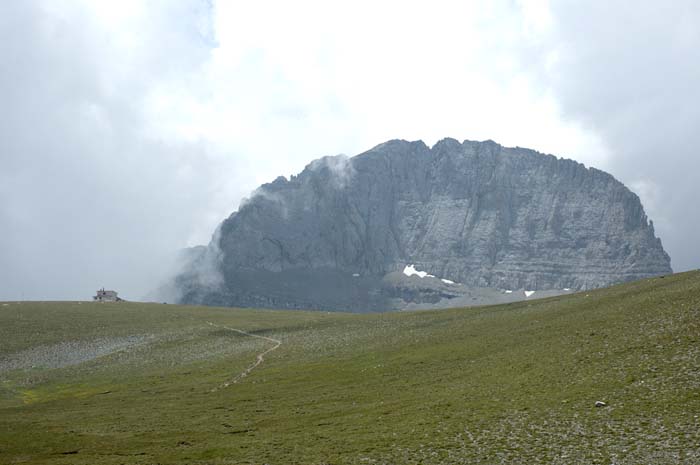
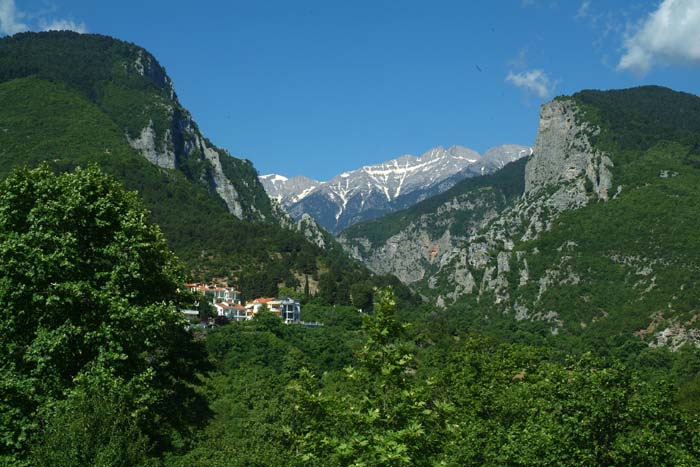
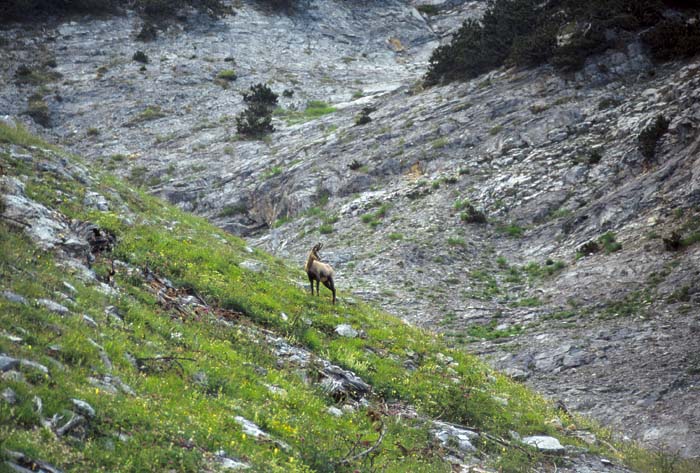
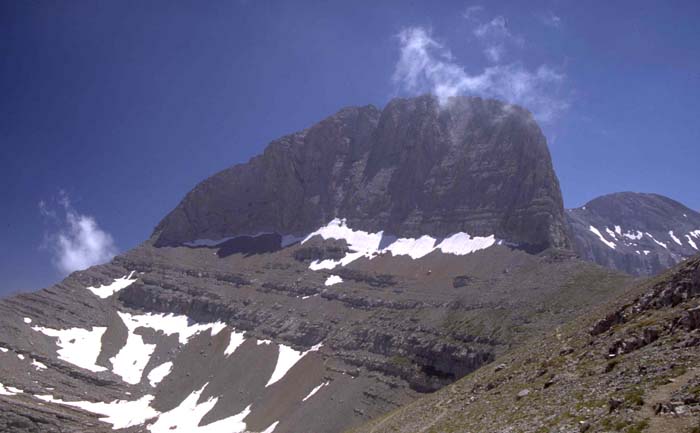
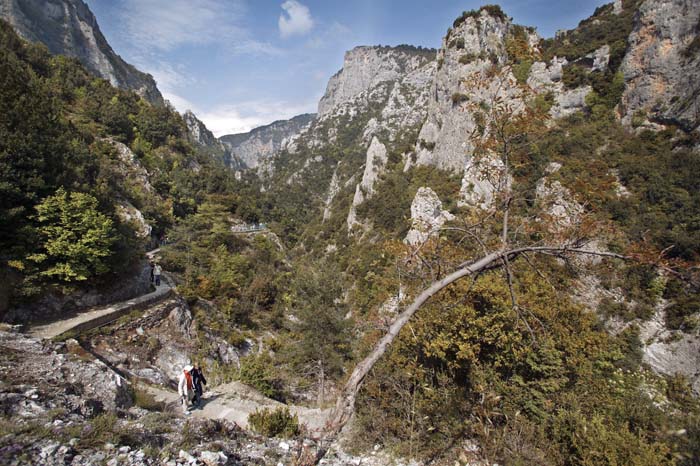
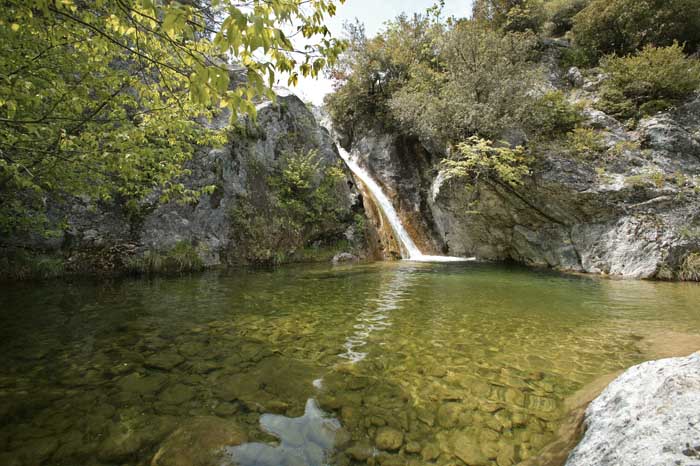
The changes in the climatic conditions, the varying heights, the variety of relief and the proximity of the sea have influenced the distribution of the different plant systems.
There are five successive belts of vegetation identifiable at the different levels, in addition to the distinct mountain ranges between them:
From 0 - 300 m.: suitable principally for the cultivation of grapes and olives, fruit trees flourish and bushes spring up.
From 300 - 700 m.: hardy and flat leaved evergreens are to be found here as well as varieties of Oak, Chestnut and Arbutus.
From 700 - 1600 m.: an extensive forest of pine and fir, principal among which is the Black Pine. Beech trees also appear and occasional elm Wild Cherry trees are to be found.
From 1600 - 2100 m.: mostly mountain pine including a rare variety, the Rompolo.
Above 2100 m. is the Alpine Zone, with rocky plains and steep gorges where some of the scarcest and most beautiful of the wild flowers of Olympus live.
More than 1700 different types of plant life have been recorded on Olympus to date, which is approximately one quarter of the known plant population of Greece.
There are over 150 different varieties of plant above the tree line on the bare rock faces of the mountain. Of these, half are to be found only in the Balkans and 23 are indigenous to Olympus, unique worldwide.



